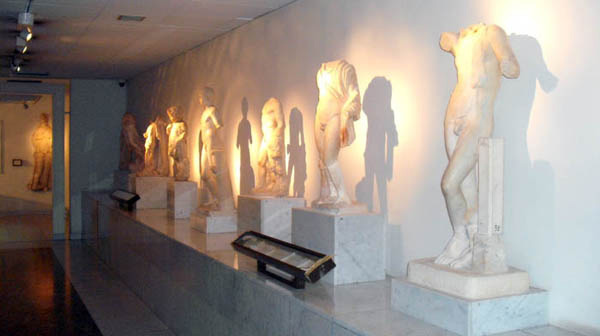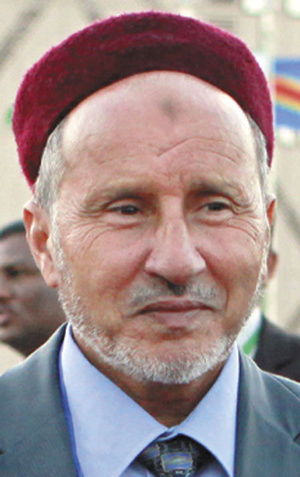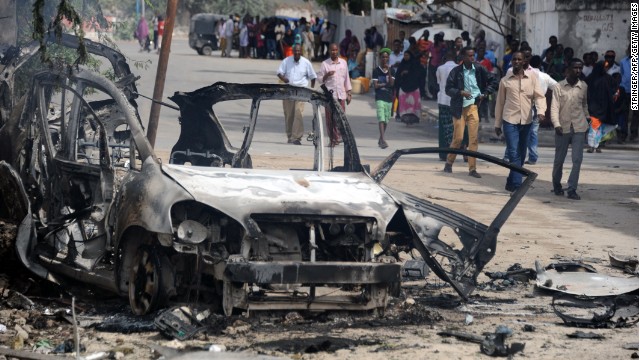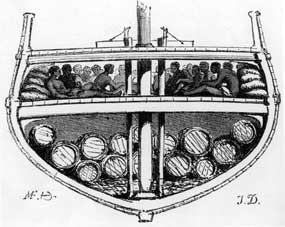-
Recent Posts
Recent Comments
Archives
Categories
Meta
Follow Us!
Tags
Africa Algeria Aljazeera Al Shabaab America ancient history Angola anti-colonialism BBC Beauty Boko Haram Botswana climate CNN colonialhistory Colonialism Colonization Cote D'Iviore Dark Continent Ebola Ethiopia final film project geography history Imperialism ivory coast Kenya Liberia Marriage media bias movie Nigeria Revolutionary Figures sierra leone Sierre Leone slavery soccer stereotype stereotypes Sterotype sudan The Guardian Tourism uganda Washington Post
Author Archives: Nicholas Gerard Stahl
The Red Castle Museum

One of Libya’s shining examples of the art and history of the country is the Saraya Museum also known as the Red Castle museum. The Red Castle was converted into Libya’s first museum in 1919 by the colonial power at the time, Italy. The museum is located in Tripoli, Libya’s capitol city. The museum itself is a historical site because the Red Castle was built as a defensive structure used to guard the city throughout its history. It was given its name “the red castle” because the castle was painted red by Spanish invaders around 1510A.D.
The museum houses some of the best archeological and historic artifacts of Libya’s history. These artifacts range from marble and stone busts to pottery and mosaics as well as dinosaur bones. The museum houses many treasures from the prehistoric, Greek, Roman, Byzantine, and Islamic eras of Libya’s history. Many archeologists believe the country of Libya to be a goldmine of historic artifacts and that only a fraction of these pieces of human history have been discovered. Of these discovered artifacts many are on display at the Saraya museum.

The museum contains 47 galleries spread across four levels. Each level is coordinated by type of art exhibited. The ground floor houses artifacts from prehistoric and ancient Libyan times. Artifacts included cave drawings and rock art as well as ancient Berber pottery. The first floor contains artifacts from Libya’s roman period. It contains artifacts from the historical site of Leptus Magnis including glass and pottery from the roman era. The second floor contains Traditional and Islamic exhibits including artifacts from Libyan folklore to traditional costumes and jewelry. The third floor is dedicated to Libya’s struggle for colonial independence and houses belongings from important political figures as well as a section for Libya’s natural history.

The museum occupies only 10,000 square meters of space which is relatively small for a museum however it is considered one of the richest and most important museums in the world. It is a testament to the beauty of Libya and the importance of its history. In my opinion, Libya is one of the most beautiful places in northern Africa with a rich history and beautiful landscape. Due to recent conflicts caused by civil war Libya has a stigma of being unsafe and western media only shines the spotlight on the negative aspects of the country. Like other countries in Africa I think Libya has been given an unfair stereotype.

Due to this stereotype, I really enjoyed learning about the Saraya museum. It was refreshing to learn about some of the beautiful things that Libya has to offer. I was surprised to hear that Libya is a historic goldmine but considering its diverse history it is expected that there would be many treasures to be found. It’s Roman and Greek exhibits attest to the greatness that Northern Africa used to attain. It was home to some of the greatest civilizations on earth and has a history that extends further back into time than anywhere located in North America.
Posted in Uncategorized
Libyan Revolution
In this blog I would like to talk about a key political figure in the 2011 Libyan revolution. His name is Mustafa Abdul Jalil and he served as the Justice Minister for the Gaddafi regime. In February 2011, he was dispatched by the regime to deal with the beginnings of the uprising in Benghazi. There he witnessed excessive violence against unarmed protesters by the Gaddafi regime. Because of this, he became the first member of Gaddafi’s cabinet to resign and within days of his resignation he became chairman of the NTC (National Transitional Council) – an organization set up to transition the country to democracy after the fall of the Gaddafi regime.

Mr. Abdul Jalil was born in the eastern city of Bayda and studied law and Shariah (Islamic Law) at the University of Libya. After graduating, Mr. Abdul Jalil worked as a lawyer for a public prosecutor’s office before becoming a judge in 1978. In 2002, he became President of the Court of Appeal and then a few years later he became President of the Court of Bayda. In 2007, Mr. Abdul Jalil was appointed Justice Minister of the Gaddafi regime and would stay there until the beginning of the revolution.

Even as a judge, Mr. Abdul Jalil was known to rule against the government. People knew of his capacity to turn against Gaddafi rule. When he was called to negotiate peace in Benghazi during the uprising, he found his chance to turn against the regime. He publically resigned as Justice Minister on television saying he could not cope with the difficulties facing the judicial sector of the state. This was a dramatic move because Gaddafi refused his resignation. It is unsure why Gaddafi refused his resignation but nonetheless it should have given him quite a shock. After his resignation, Mr. Abdul Jalil began his work as chairman of the NTC.

Mr. Abdul Jalil first major move for the NTC was to call for the imposition of a no-fly zone over Libya. He asked other nations to aid Libya in overthrowing Gaddafi rule by restricting Libya’s airspace, however, he made sure to stress that he did not want foreign ground troops for support. This restricted Gaddafi’s use of military planes and helped reduce the number of casualties during the uprising. Next, Mr. Abdul Jalil held a meeting in Bayda to discuss the formation of an interim government that could help Libya after Gaddafi’s rule had ended. Positions for the temporary government were decided as well as ground work for a formal democratic government. Mr. Abdul Jalil wanted Libya to have democratic elections and this temporary government would stabilize the country until elections could begin.
In October 2011, the NTC announced that Libya had been liberated. The country began the process of forming a new government and holding democratic elections. In July 2012, Libya held elections to form a committee charged with drafting a new constitution. There is no doubt that Mr. Abdul Jalil was a very influential leader during Libya’s revolution. In my opinion, I see him as they guy who got the ball rolling. He was the first member of the cabinet to publically defy Gaddafi. His belief in human rights won the support of more than 30 foreign government as well as the imposition of a no-fly zone. But most of all, he was not afraid to speak about his views even, if they defied the most powerful man in his country.
Posted in Uncategorized
African and American Colonialism
Africa and North America both experienced European colonialism. In some ways, the two continents had similar experiences such as the exploitation of natural resources. In other ways, the continents experienced different experiences such as the mass migration of Africans during the slave trade. In this blog, I will compare and contrast the experiences of North America and African colonialism. I will also explain my beliefs on how the slave trade has affected modern Africa.
African and North American colonialism shared similar experiences. One of which was the reason why Europeans settled the continents in the first place. Europeans believed that North America and Africa were full of natural resources ripe for the taking. Spanish settlement of South America proved that there were riches to be had in these unsettled lands. Unfortunately, North America was not as big of a gold producer as South America. It did have a lot of trees for lumber and as we discovered later, North America had oil. Africa on the other hand had gold and diamonds. Africa also had the slave trade which at the time Europeans thought of as a resource.
African and North American colonialism shared a similarity in how the Europeans dealt with the native populations. Europeans never gave the native populations mutual respect. When Europeans came to America they saw the Native Americans as savage people and displaced them from their land. In some cases, Native Americans were enslaved and worked for the Europeans. When Europeans settled Africa the same thing happened, they saw the native people as savage or primitive and enslaved them as well. On all levels, the African slave trade was on a much larger scale compared to the enslavement of Native Americans. In fact, the Native Americans low resistance to Europeans disease made African slaves more desirable. This just added to the demand for African slaves in the Americas.
A difference between African and North American colonization would be the level at which the slave trade was conducted in Africa. Millions of African slaves were ripped from their homes and sent over to the Americans to work as slaves. This is different from the colonization of America because Europeans did not export Native Americans as slaves to other countries. I believe that such a mass migration of people is one of the reasons why Africa is underdeveloped as a continent today.
The slave trade in my opinion is one of the reasons why Africa is relatively underdeveloped compared to the rest of the world. African slaves were traded by the millions. European traders bought these slaves with goods they had brought from England. The slave trade was literally a flesh for property business. Traders traded sugar, rum, linens, and even seashells for African slaves. So if you look at that situation on a large scale, there are millions of Africans being bought for random goods such as rum. These goods were made for European lifestyle not the lifestyle of the majority of the African continent. These goods were most likely useless to people other than slave traders. I believe that this lack of common currency as well as the displacement of millions of young Africans had a social-economic impact that Africa is still feeling the effects of today.
Another similarity I can see between the colonization of Africa and North America is the capacity for revolt found in the colonists. The United States of America overthrew Britain’s power in the American Revolutionary War. We were able to gain our independence and set up a democratic government. The same thing is happening to African countries today. South Africa is the first country in Africa to gain its independence and had its first democratic elections in 1994. Just as the U.S. and South Africa gained their independence, I believe that all African countries will follow suit given enough time.
Posted in History
Ancient Libya
Many Berber tribes lived in ancient Libya. Of these tribes the libu was most populous. Ancient Libyans were nomadic hunter gatherers who lived off goats, camels, and other livestock. Not much is known about the early history of Libya and most records of early Libyan people are by other neighboring groups such as the Egyptians. Earliest records show that parts of Libya were ruled by the Phonetians and Carthaginians. From there, Libya was ruled by the Greeks who established major cities in eastern Libya. After the Greeks, the Roman Empire took over and developed Libya into one of its many wealthy provinces. Proof of Libya’s wealth and prosperity during this time can be seen at Libya’s many roman ruins. From the Romans, Libya was taken over by the Arabs whose rule lasted into the 16th century.
In 700 B.C., the Greeks had arrived in Libya. They established five major colonies in eastern Libya (also known as Cyrenaica). These five colonies where knows as The Pentopolis, because of the five major cities, Cyrene, Apollonia, Ptolemais, Taucheira, Berenice, that were in the colonies. The pentopolis enjoyed a good deal of autonomy, with Greek influence being limited to the coastal regions of Libya. Some areas of southern Libya experienced no Greek presence at all. Libya’s green mountain provided fertile land for the Greeks and supplied them with livestock, grain, and wine. Because of this, Pentapolis had a high level of civilization. Cyrene, in particular, was one of the most culturally and academically developed city in North Africa. The Greek influence in Pentopolis was strong until around 300b.c, when it began to dwindle. Finally with the rise of the Roman Empire, the last Greek ruler of Libya, Ptolemy Apion surrendered Pentopolis to Rome.
After the Punic wars, Rome had taken over the eastern part of Libya known as Cyrenaica around 100B.C. The western part was later captured and given the provincial name Tripolitania. Under roman rule, Libya prospered economically with the city, Leptis Magna, rivalling Alexandria and Carthage in prominence. For years, Tripolitania and Cyrenaica were wealthy roman provinces and had a common language and legal system. The ruins of Leptis Magna and Sabratha could attest to the prosperity Roman Libya experienced with the cities great baths and forums. Roman Libya began its decline around 300 A.D. and was divided up by its rulers until the mid-7th century when Arabs invaded.
With the decline of the Roman Empire, Roman hold over Libya became weak. Around 650 A.D., Arabs invaded Libya and received little retaliation from the few romans left there. This begins the history of Islamic rule of Tripolitania and Cyrenaica. Several dynasties ruled over Libya throughout its Islamic rule. One which prospered was the Hafsid dynasty, who ruled for 300 years. Hafsid rulers established trade with city states of Europe and promoted scholarship in areas of art, literature, and architecture. Libya’s period of Arab rule lasted 800 years until Spanish takeover in the 16th century.
Nicholas Stahl
Posted in History
Libya, the tourist capital of the world

Enjoy lush green mountains as well as beautiful beaches? Do you enjoy visiting ancient roman ruins? Well if you do Libya is the place for you! There many natural and man-made wonders of the world are in Libya today. All you need is a plane ticket!

I will first start off with the climate of Libya. There are generally considered two types of climate in Libya. One of which is the Mediterranean zone, which is found on the coastal lowland. This area experiences warm summers and mild winters and is home to some of the finest beaches in Libya. The other type of climate is that of the inner part of the country which is desert. The desert region is home to many ancient ruins and has beauty rivaling that of the coast.


Less than 2% of Libya gets enough rainfall for settled agriculture. Of the 2%, the Jabal al Akhdar region of eastern Libya receives between 23-15 in of rain per year. All other parts of the country receive 15 in or less rainfall per year with the Sahara being lowest at 2in or less. Libya is known for being erratic when it comes to rainfall, some areas can be flooded one year and can endure a sever drought the next. Because of this Libya can have a changing landscape, one part lush vegetation, the other part barren desert. This can provide beautiful contrasts between areas of water and areas of desert that attract tourists from around the world. Coupled with Libya’s diverse climate are the country’s beautiful ancient roman ruins, another very big tourist attraction for the country.

Some of the biggest attractions in the country are near Libya’s capitol city, Tripoli. Tripoli is not only Libya’s capital but also one of the country’s biggest ports. The city is home to a large museum, the Jamahiriya, as well as the arch of Marcus Aurelius, the last surviving roman ruin in the city.

The Assai al-Hamra or “Red Castle” dominates Tripoli’s skyline. Its architecture is reminiscent of roman times and this citadel has been a major part of the city for hundreds of years.

The Gurgi and the Karamanli Mosques are known for their beautiful and intricate tile work and decorations and are must see if you visit Tripoli.
There are many sites to see outside of Tripoli as well. The town of Ghadhames is a perfect example of Libyan Desert architecture and is a popular attraction because of this.
One of the most archaeologically intriguing sites in Libya is that of Leptis Magna. The site is near the town of Khomes and is about 120 kilometers east of Tripoli. The ruins contain a theater, a basilica, and a huge bath, all of which can attest to the former glory of the Roman Empire.

The Greek and Roman city of Cyrene is another must-see in Libya, as it is considered a replica of the Delphi in Greece. It was the oldest and most important of the five greek cities in the region. Because of this, it gave eastern libya its classical name, Cyreniaca, which lasted into modern time.
Libya also has a beautiful coastline. So now that you have seen Libya, it’s time to book your flights!
Posted in Uncategorized
12 people die in an Islamic attack on Somali prison
September 3, 2014
http://edition.cnn.com/2014/08/31/world/africa/somalia-bombing/index.html?hpt=iaf_c2

I read this article on CNN this past week. The issue at hand is an attack on a high security prison near Mogadishu Somalia. The article reports that Islamic rebels detonated a car bomb in front of the main gate of the prison and then proceeded to open fire on the prison guards. The prison guards responded and we able to neutralize the rebel group. This attack lead to the loss of life of 3 prison security guards as well as 2 civilians. The article also reports that the Islamic rebels were part of the Al-Shaabab military group which is said to be linked to Al-Qaeda. Al-Shaabab openly took credit for the attack and said they we trying to free members of their group who were inmates at the prison.
I found this article important because it is about a military conflict that happened in Africa. In last week’s class we discussed how the media reports a lot of attacks/conflicts in Africa and how the media paints a distorted picture of Africa to the American population. The media stereotypes Africa into this war torn country that needs to be saved. The media often uses different tones to convey a sense of disparity as they report about conflicts in Africa. These articles about military conflicts convey a sense of danger which I think is often stereotypical and should be discouraged in journalism.
When reading this article, I found it a bit stereotypical. The author of the article actually does not write very much into the story. Most of the article is straight quotes from eye witnesses and government officials. In most articles, I find quotes to be very useful when coupled with sufficient text explaining or backing up the idea captured in the quote. I found the arrangement of the quotes in this article not very useful due to lack of text backing the quote. When reading this article, I found that the quotes being used were arranged in a way that seemed to give it a stereotypical tone. I feel like the author isn’t explaining the entire story but instead uses bits and pieces of dialogue to create a dramatic feel.
In my opinion, I think this article could have had a very different tone if more text was used to back up the quotes being used. The heavy use of quotes gives the piece a cut and dry feeling of conflict but does not give much information on parties involved. To me it seems like a typical “Africa is a dangerous place” terrorist attack article. I found myself wanting to know more information about the prison that was attacked as well as the rebel group who initiated the attack. If the author took more time to add information about the prison and the Islamic rebels, I believe the article would be much more effective at reporting a deadly terrorist attack.
-Nicholas Stahl










